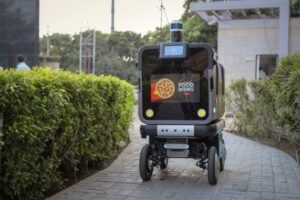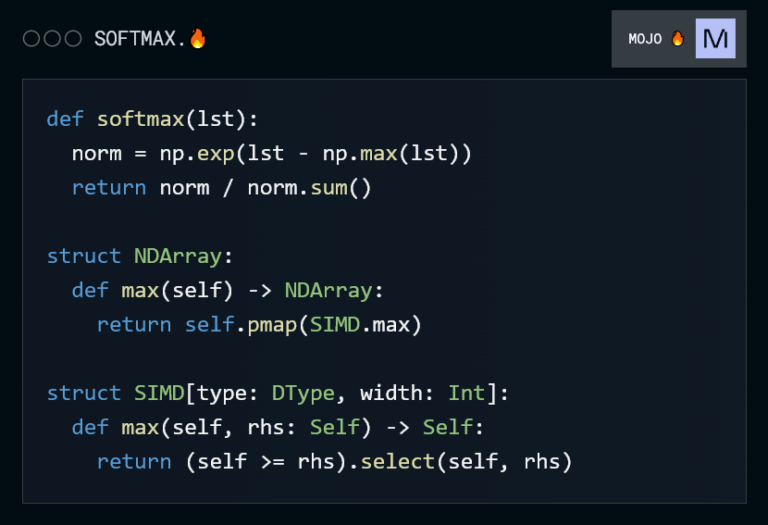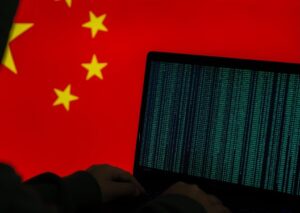About the Author
Dashveenjit Kaur is an experienced tech and business journalist with a determination to find and produce stories for online and print daily. She is also an experienced parliament reporter with occasional pursuits in the lifestyle and art industries.
The escalating rivalry between the United States and China in Artificial General Intelligence (AGI) has taken a significant turn, as the US-China Economic and Security Review Commission (USCC) recommends a Manhattan Project-style initiative and restrictions on humanoid robots in its latest report to Congress. Released in November 2024, the Commission’s annual report outlines 32 recommendations that could fundamentally alter how the two countries interact, with artificial intelligence taking centre stage in a new chapter of strategic rivalry.
US-China: The AGI Moonshot and Critical Tech Controls
At the heart of the report lies an ambitious proposal: establishing a government-backed program to develop AGI – AI systems that could match and potentially exceed human cognitive abilities. However, this recommendation is just one piece of a larger technological puzzle, including export controls, investment screening, and new trade policies to preserve US technological advantages.
The proposed AGI initiative would provide multi-year contracts to leading AI companies, cloud providers, and data centre operators. It would be backed by the Defense Department’s highest priority, ‘DX Rating’ – a designation typically reserved for critical national security projects. This level of government involvement in AI development mirrors the urgency seen in previous technological races, raising crucial questions about the role of state intervention in an industry primarily driven by private sector innovation.
The AGI Initiative: A Complex Scientific Challenge
Achieving AGI remains a complex scientific challenge that may not yield quick results, regardless of funding levels. While the proposed initiative could provide a significant boost to AI research and development, it is uncertain whether this approach will accelerate or hinder progress in AGI.
The Commission’s Tech-Focused Recommendations: Beyond AI
Notable proposals extend beyond AI, including restricting imports of Chinese-made autonomous humanoid robots with advanced dexterity, locomotion, and intelligence capabilities. The report also targets energy infrastructure products with remote monitoring capabilities, reflecting growing concerns about connected technologies in critical infrastructure.
- Restricting Autonomous Humanoid Robots: The Commission recommends restricting the importation of Chinese-made autonomous humanoid robots due to their advanced capabilities.
- Energy Infrastructure Products: The report targets energy infrastructure products with remote monitoring capabilities, highlighting concerns about connected technologies in critical infrastructure.
- Export Controls and Investment Screening: The Commission suggests strengthening oversight of technology transfers and investment flows, building on existing export controls in the semiconductor space.
Reshaping Trade Relations and Investment Flows
Perhaps most significantly, the report recommends eliminating China’s Permanent Normal Trade Relations (PNTR) status—a move that could reshape the technology supply chain and trade flows that have defined the global tech industry for decades. This recommendation acknowledges how deeply intertwined the US and Chinese tech ecosystems have become, while suggesting that this interdependence may now pose more risks than benefits.
Data Transparency: A Key Theme in the Report
The Commission calls for better tracking of investments flowing through offshore entities, addressing a significant blind-spot in current oversight mechanisms. This emphasis on data transparency reflects growing concerns about the risks associated with international investments and technology transfers.
Challenges and Future Implications
The effectiveness of the proposed measures will likely depend on coordination with allies and partners who share similar technological capabilities and concerns. The report acknowledges this by recommending multilateral approaches to export controls and investment screening.
US-China technological competition has entered a new phase where government policy may play a more direct role in shaping development. Whether this approach accelerates or hinders innovation remains to be seen, but the tech industry should prepare for increased scrutiny and regulation of international technological collaboration.
The Road Ahead: Increased Scrutiny and Regulation
If these recommendations are implemented, the tech industry may need to navigate an increasingly complex regulatory landscape. Companies would face new compliance requirements for international investments, technology transfers, and collaborative research projects.
Conclusion
The emerging US-China AGI rivalry has reached a critical juncture, with the USCC recommending a Manhattan Project-style initiative and restrictions on humanoid robots in its latest report to Congress. The proposed AGI initiative and other tech-focused recommendations could fundamentally alter how the two countries interact, with artificial intelligence taking centre stage in a new chapter of strategic rivalry.
The effectiveness of these measures will depend on coordination with allies and partners who share similar technological capabilities and concerns. As government policy plays a more direct role in shaping development, the tech industry should prepare for increased scrutiny and regulation of international technological collaboration.
Recommended Reading
- "The Future of AI: A Roadmap for Development": This report provides an overview of the current state of AI research and development, highlighting key challenges and opportunities.
- "The Risks and Benefits of Autonomous Humanoid Robots": This article explores the potential risks and benefits associated with autonomous humanoid robots, including concerns about job displacement and cybersecurity threats.
Related Topics
- Artificial General Intelligence (AGI)
- US-China Rivalry in AI
- Export Controls and Investment Screening
- Data Transparency and Oversight

















